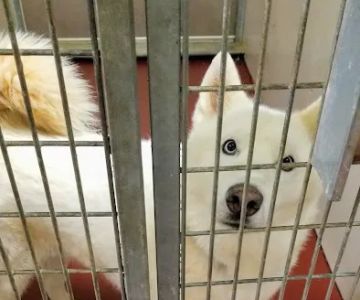How to Prevent Pet Obesity with Proper Diet – Effective Tips for a Healthy Pet
- Understanding Pet Obesity
- Why a Proper Diet is Crucial in Preventing Obesity
- Key Factors in Designing a Healthy Diet for Your Pet
- Common Mistakes to Avoid in Feeding Your Pet
- How to Monitor Your Pet’s Weight and Adjust Their Diet
- Real-Life Examples of Successful Pet Weight Management
- Conclusion: Maintaining Your Pet’s Health with Proper Diet
1. Understanding Pet Obesity
Pet obesity is a serious and growing problem for pets in many households. Just like humans, pets can become overweight due to an imbalance between the calories they consume and the energy they burn. Pet obesity can lead to a range of health problems, including joint issues, heart disease, diabetes, and a reduced lifespan. In fact, studies have shown that nearly 60% of pets in the U.S. are overweight or obese, which highlights the importance of proper weight management for pets.

845 W Ridge Rd, Gainesville, GA 30501, USA
See Details2. Why a Proper Diet is Crucial in Preventing Obesity
Feeding your pet the right amount and type of food is the first and most important step in preventing obesity. A proper diet ensures that your pet gets the necessary nutrients without overloading them with excess calories. Without proper portion control, even the healthiest of foods can lead to weight gain. Furthermore, a balanced diet that includes the right mix of proteins, fats, and carbohydrates will help maintain your pet’s metabolism and prevent fat accumulation. Avoiding high-calorie, low-nutrient treats is also crucial in managing their weight.
3. Key Factors in Designing a Healthy Diet for Your Pet
When designing a diet for your pet, consider the following factors:
- Age and Breed: Different breeds and ages have different nutritional needs. Puppies, kittens, and young animals need more calories and protein for growth, while older pets may need fewer calories to maintain a healthy weight.
- Activity Level: Active pets or working dogs require more calories to fuel their energy expenditure, while less active pets may need a more controlled calorie intake.
- Health Conditions: Pets with health conditions like arthritis or diabetes may require specialized diets that focus on weight control and improved overall health.
- Portion Control: Ensuring that your pet’s portions are appropriate for their size and activity level is key to preventing overfeeding. Use a measuring cup or weigh their food to maintain consistency.
4. Common Mistakes to Avoid in Feeding Your Pet
Pet owners often make several common mistakes that contribute to pet obesity. These include:
- Free-Feeding: Leaving food out all day for pets to graze leads to overeating. Instead, set specific meal times and measure out their portions to maintain control.
- Giving Too Many Treats: Treats are often high in calories and can contribute to weight gain. Limit the number of treats your pet receives and ensure they are healthy, low-calorie options.
- Feeding Table Scraps: Many pet owners are guilty of giving their pets table scraps, but these foods are often too rich in fat and calories. Avoid feeding your pet human food and stick to pet-approved meals and treats.
- Not Adjusting Their Diet: Pets’ dietary needs change over time. If you notice your pet gaining weight, it’s important to adjust their diet accordingly, reducing portions or switching to a lower-calorie option.
5. How to Monitor Your Pet’s Weight and Adjust Their Diet
To successfully prevent and manage pet obesity, it’s important to regularly monitor your pet’s weight. Keep track of their body condition score (BCS), which helps assess whether they are underweight, ideal weight, or overweight. You can also consult your veterinarian to determine the ideal weight range for your pet based on their breed, age, and size. If your pet is gaining weight, consider reducing portion sizes or switching to a lower-calorie food. Also, ensure that they are getting enough physical exercise to burn calories.
6. Real-Life Examples of Successful Pet Weight Management
Several pets have successfully lost weight through proper diet and exercise. For example, Bella, a Labrador Retriever, was 10 pounds overweight when her owner started feeding her a portion-controlled, high-protein diet. After several months, with regular exercise and portion control, Bella lost weight and became more active. Another case is Max, a senior cat who lost weight by switching to a special diet for senior cats and increasing his activity levels with interactive toys. These cases show that with the right diet and care, pets can achieve and maintain a healthy weight.
7. Conclusion: Maintaining Your Pet’s Health with Proper Diet
Preventing pet obesity with a proper diet is essential for your pet’s long-term health. By feeding them the right amount of healthy food, avoiding common feeding mistakes, and regularly monitoring their weight, you can help ensure that your pet lives a long, healthy, and active life. If you’re unsure about the best diet for your pet, consult your veterinarian for expert advice. A tailored, healthy diet will not only prevent obesity but also improve your pet’s overall well-being.
For more tips on pet health and nutrition, and to discover high-quality pet food options, visit Led Banner. Learn how you can help your pet live a healthier life through proper diet and nutrition.










